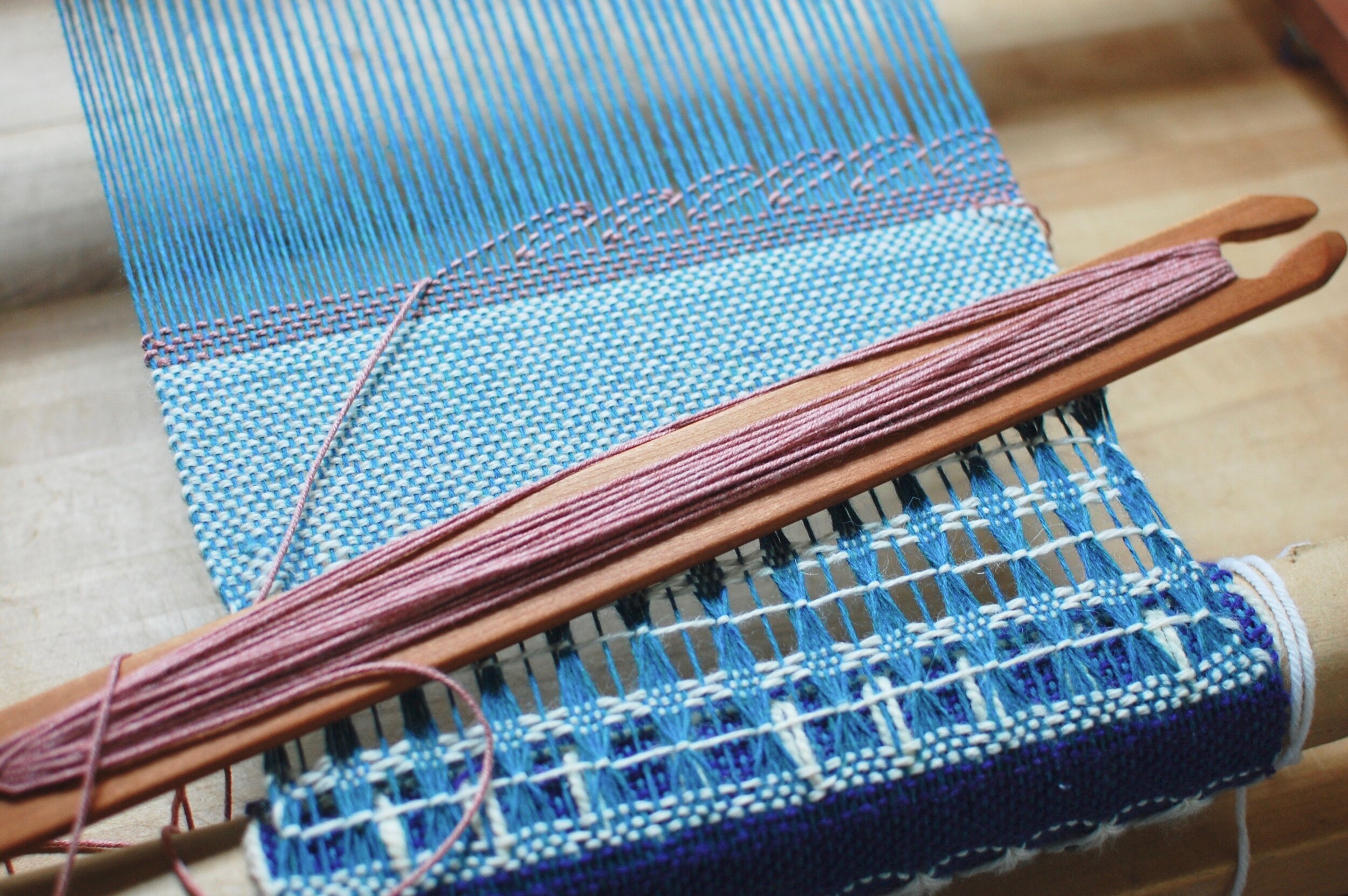My first experience weaving was on a 20” Beka Rigid Heddle loom. I immediately fell for the craft and the rigid heddle loom gave me the confidence that I needed to go on to learn to weave on a floor loom. I’m certain that part of my quick love for the Beka loom was due to a simple modification that my teacher, Christine Wilkinson, had made to the loom before I ever put hands on it. Christine came up with an ingenious and simple way of adding a front apron rod to a Beka rigid heddle loom that makes the tying on process much easier.
Beka rigid heddle looms have an interesting and, if I’m honest, kind of cumbersome method of tying on. Most rigid heddle looms have dowels or rods attached to the front and back beams. These dowels are then used to wind on and tie the warp threads. Beka looms use a “tooth” system to organize the warp. The front and back beam are each inlayed with a sturdy plastic strip of, what I call, teeth. These teeth on the back do a great job of organizing the warp ends. I also like this system for the back beam because once the warp is measured and the rigid heddle is sleyed, via the direct warping method, you are ready to wrap the warp. No knots are needed to tie on the back and the teeth keep the warp ends perfectly spaced.
The front, however, is a different story. The manufacturer intends for the weaver to connect a piece of cord to the front “teeth” to create loops. These loops are what you are then supposed to tie on to. This system can be cumbersome. It also adds one more hurtle to getting even tension across the width of your warp. Below I’ll show you the method I learned from Christine of how to make a simple and inexpensive modification to add an apron rod to the front of a Beka rigid heddle loom.
*I should note that my loom pictured recently got beaten up by a baseboard heater during a home renovation. The hooks that it, along with another small loom and my warping board were hanging on, got torn off of the wall and fell about four or five feet to the ground. The Beka loom was the only casualty. Some of the teeth were broken off making it now look like a kid waiting for the tooth fairy. Thankfully the loom is still completely usable and I’ll have a good description to give to police if a fiber thief should ever make off with it.
What you’ll need:
- A Beka rigid heddle loom. The one pictured is the 20” version.
- About 1.5’ of Texsolv. (Other cord could be used, you would just need to tie some loops in the cord rather than using the pre-made loops in the Texsolv. If you choose to make your own, you'll want to make sure the knots on each end of the three pieces are even with each other since the end goal is to have a parallel dowel to tie your warp on to. If the knots are not evenly spaced on each length of cord your dowel will be wonky which would lead to warp tension problems.)
- Scissors
- Tape measure
- Comb or tool of your choice capable of pulling Texsolv through a small loop.
- Painter's tape
- A wooden dowel equal to the weaving width of your loom.
Step #1












